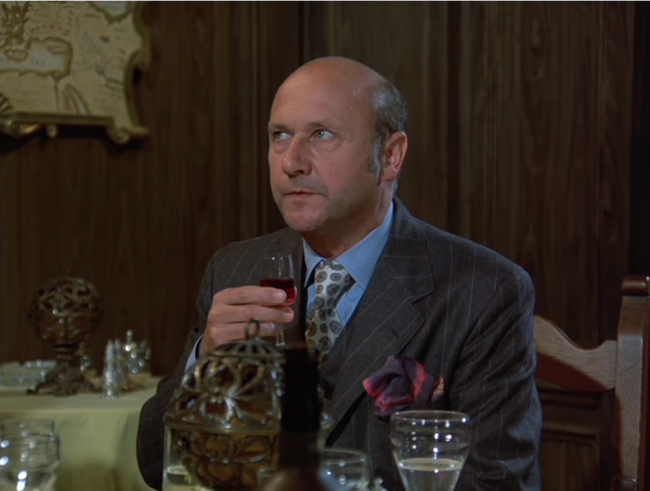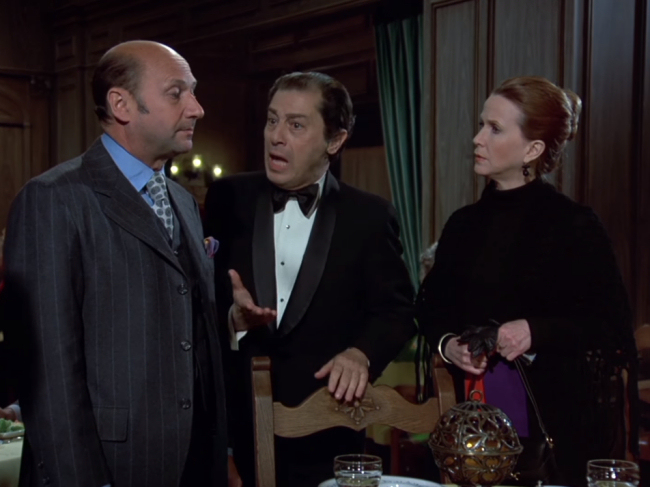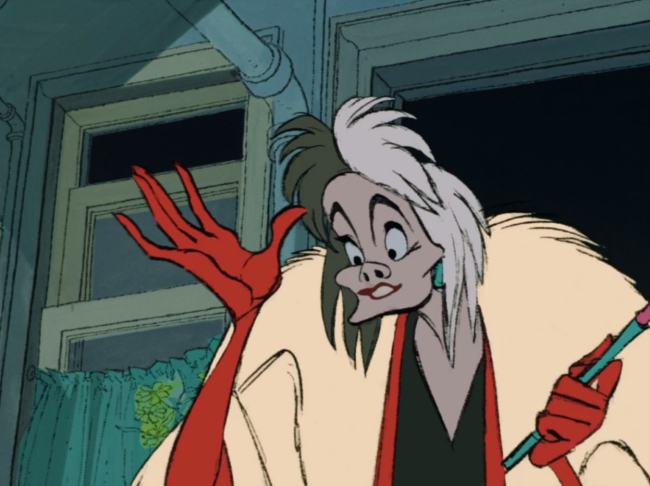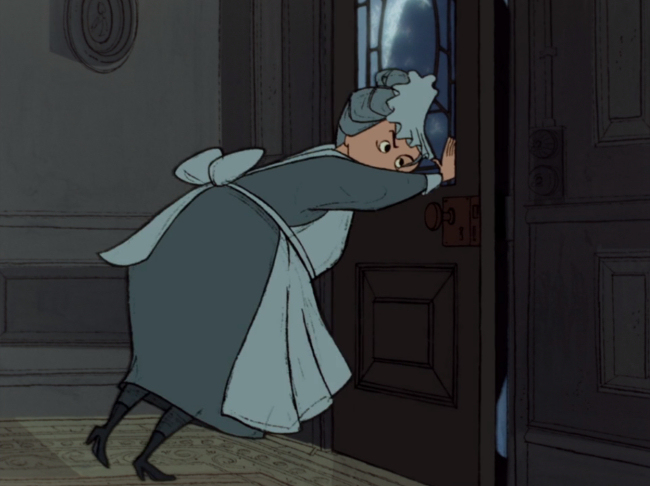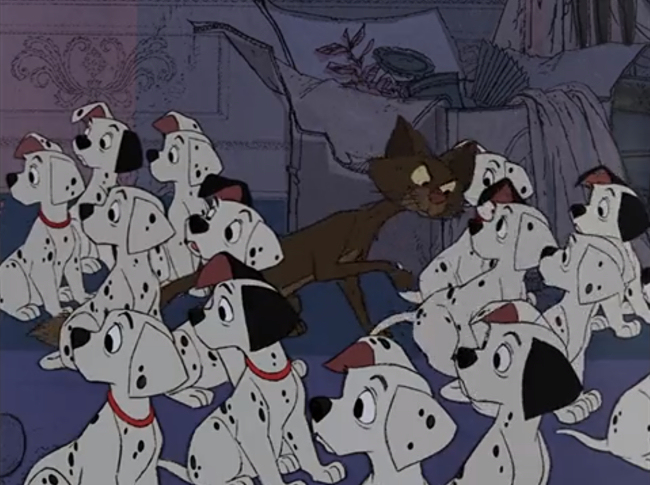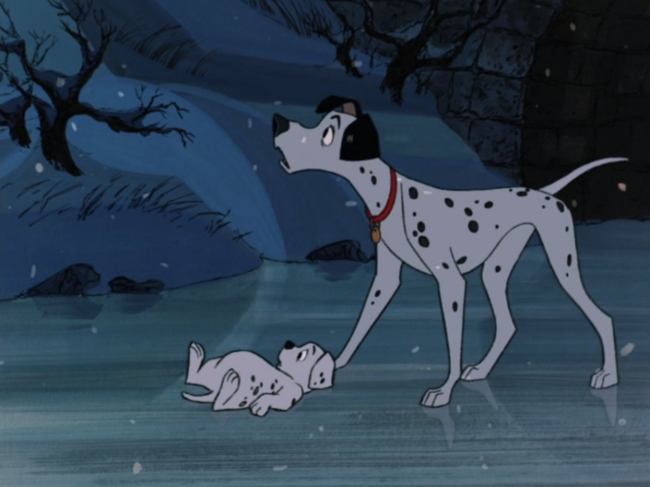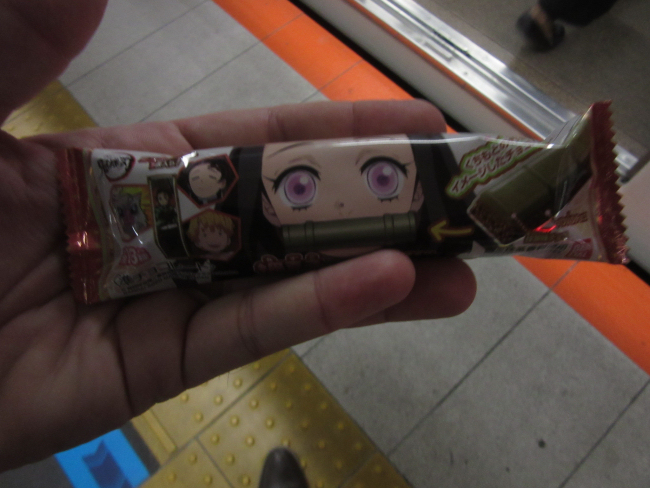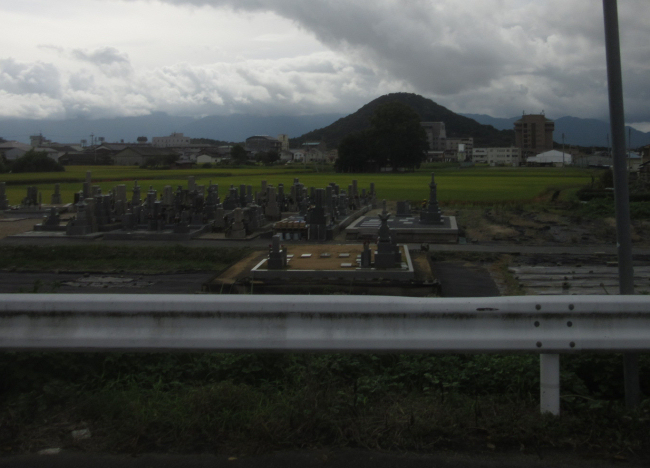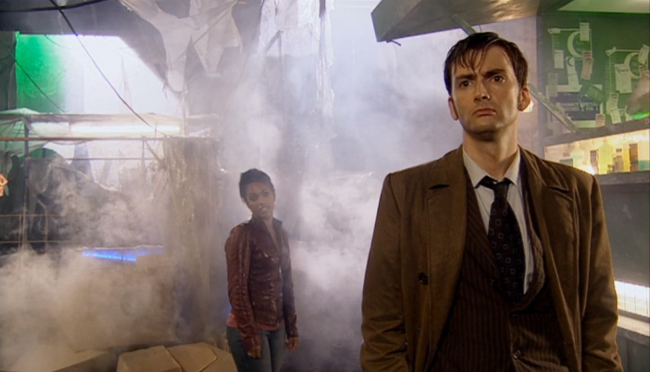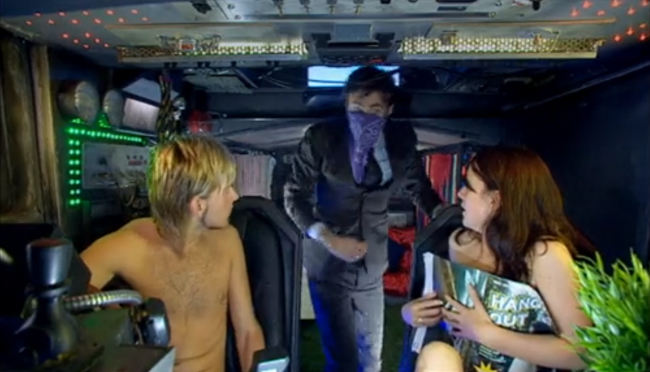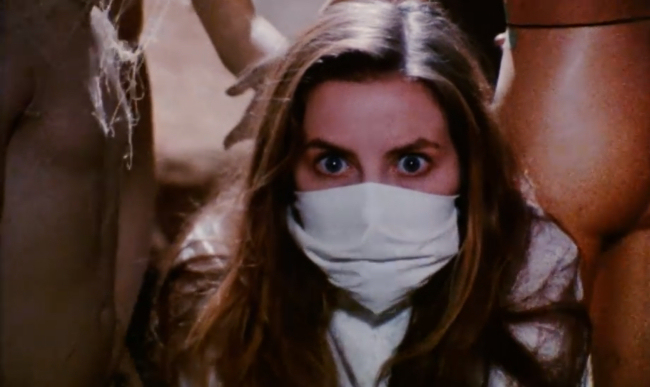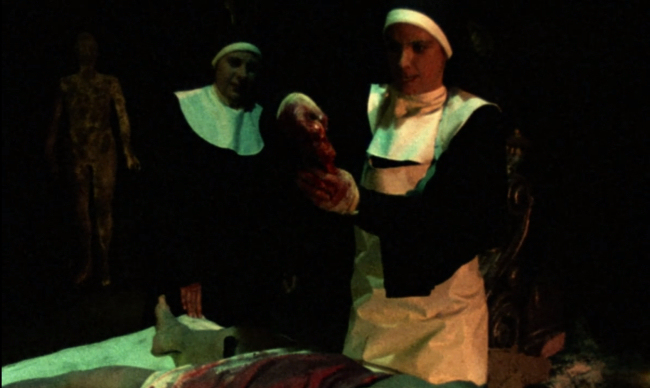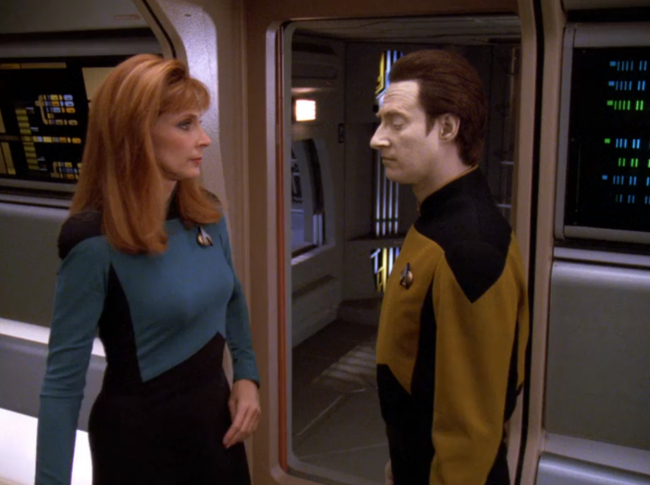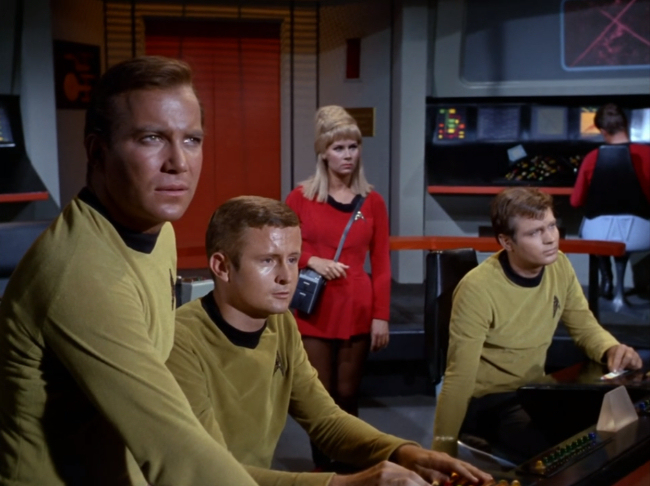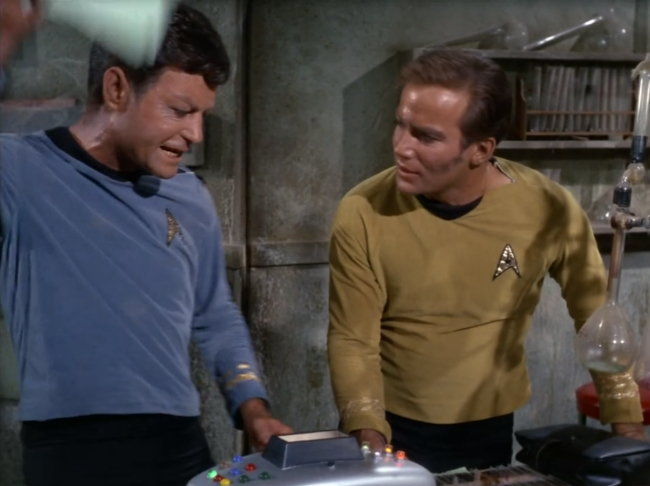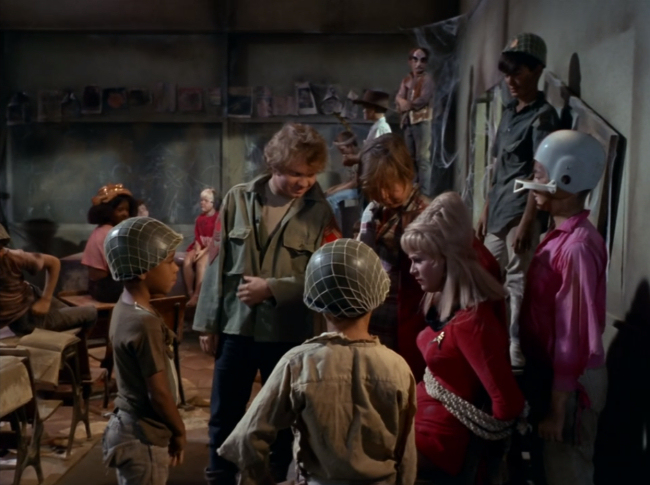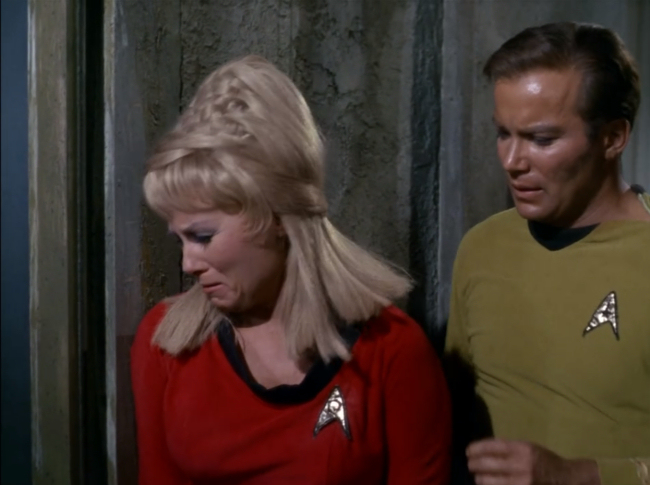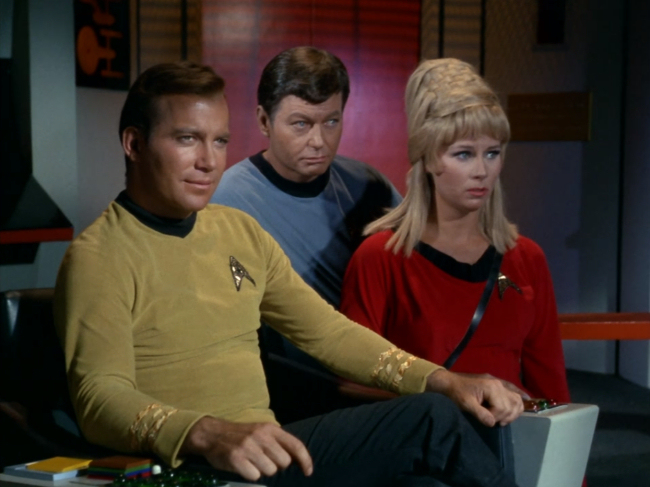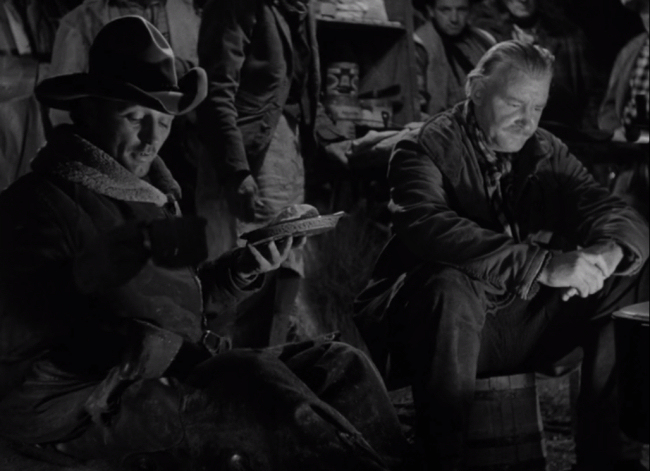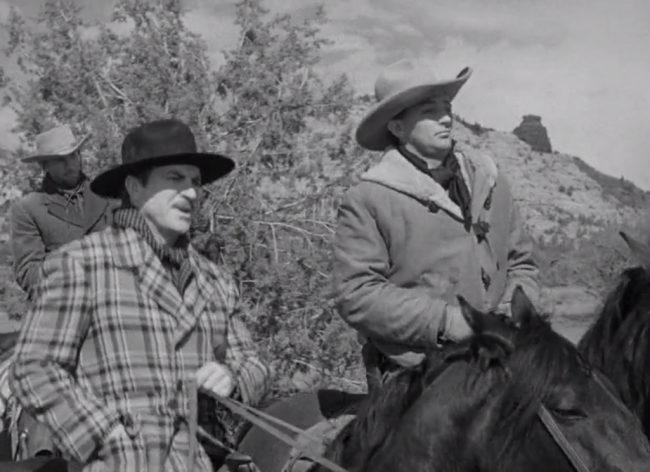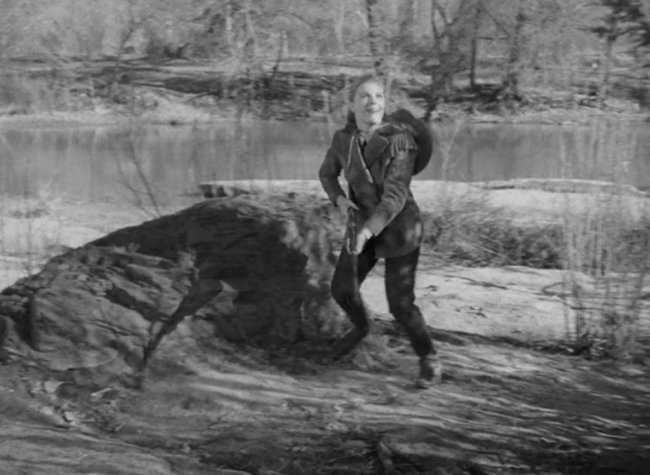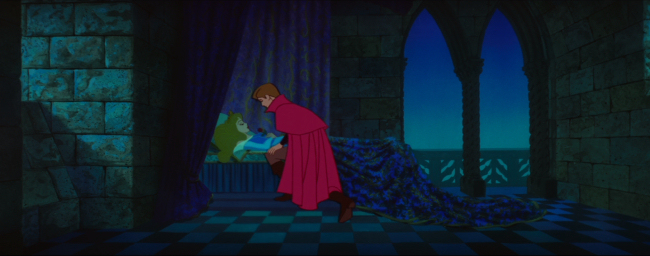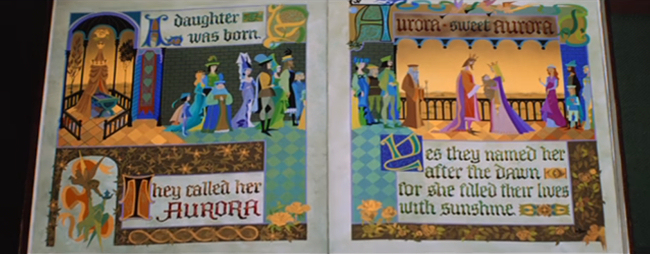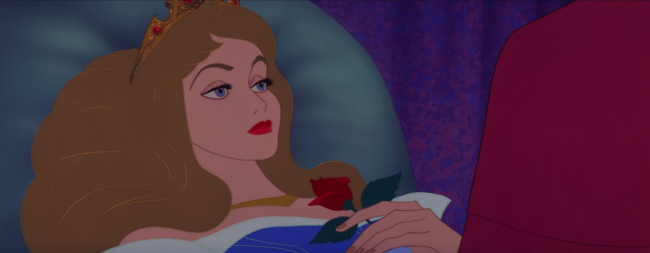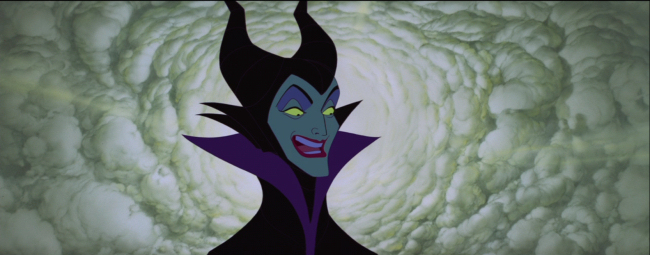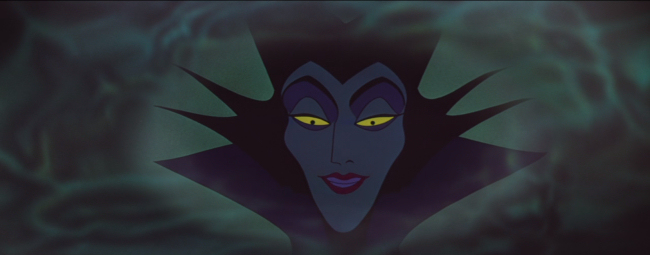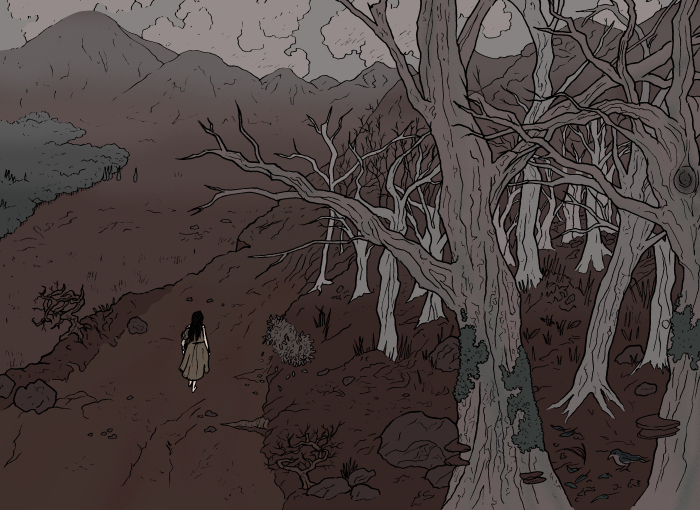
Beneath the shadow of a dull, red mountain was a forest, grey and dark. Yellow worms the size of alligators slowly coiled between the trees. Finding her away among the dry, fallen branches was a pale woman wearing the remains of a voluminous gown. Where was she going? She didn't know, she knew only that she must continue forward. As the day grew later and shadows lengthened, long, shiny red tongues of tape slowly unspooled from the trees, swaying in the light breeze. There was a smell like fresh bread and the air was warm and oppressive. Slowly the veil of the trees and red tongues was parting around a white bust. Carved with apparently the skill of classical masters, the angry face was only around five feet tall. It was a face with a hard edged, long nose with a wide bridge. Blind white eyes starred mutely at the woman whose name was Sara.
The warmth of the air and the moisture came with the strange impression of the forest as being inside a very large body. Sara wiped the sweat from her brow, finding she longed for something cool and fresh. She remembered the last thing she ate, a bowl of terrible soup from a dirty shop on the roadside. What was that flavour? Blood? Soot? Both? The inside of her mouth filled her with disgust.
Suddenly, she stumbled, stubbing her toe on a root. Her silk slipper had split open and the sole bent under her foot. She sighed at the little pain and suddenly felt even more tired. She staggered over and fell heavily against a tree, feeling the slime of the tree's moss soaking her tattered gown.
White seeds were now drifting down from the evening sky, floating across her vision, some of them sticking to the red tongues. The sunset caught on the shimmering tongues, dazzling her. What was her name? Sara. She liked to remind herself sometimes though she wasn't sure if she forgot her name or if the compulsion to remind herself just made her feel as though she occasionally forgot it. At about this time she became aware of one of the worms, almost fifteen feet into the woods before her, staring at her. It was completely still, its eyeless head lifted off the ground and pointed at her. She stared back for a second then looked away, at some dry brown leaves trembling slightly in the breeze on the ochre soil. She could still feel the worm staring at her. The day was much darker now, the night coming on like a vast wing, passing over the sky.
Feeling uncomfortable at the worm's stare, she looked up again to see it was gone now. All the worms were gone now. It was still warm, though. She stood up. What was her name? Sara.
She had to get to the next town before dark. She felt sure of that. She didn't remember why she was there or how she got there but she knew it would be terrible not to be in an inn, sitting by the hearth after the sun set.
The broken slipper flopped on the ground with every step. She took it off and stuffed it in her belt though she supposed it wasn't worth repairing.
The dim orange light was turning faintly blue. Along wit the seeds, the air was thickening with a faint white haze.
She'd reached the edge of the wood and began ascending the hill without breaking her stride. The moist red soil turned to dry and rough ground, cracked here and there and coated with a film of dust she could feel between her toes. But it was smooth ground and she could trudge up unafraid of stone or pebble.
The hill rising ahead of her was turning black against the glowing sky growing dim. It had become a deep indigo with no stars when she reached the top, over the edge. Ahead, sharp points of yellow light popped into view. An inn.
Leaves crunched under her feet now and a stone bit painfully into her bare foot. She resisted the urge to hurry. The wooden frame of the half timbered structure seemed alive and old. All was quiet but she could hear the faint sounds of crickets. The old door was dry and felt brittle. It opened on a little fire-lit room, flickering orange light showing rough plaster walls and shelves bearing copper and pewter plates. An old man with his sleeves rolled up leaned against a little bar, the firelight turning the copious white hair on his arms into a sort of aura. He was breathing heavily and his eyes rolled under heavy lids in her direction but he made no other sign of acknowledgment.
She stepped closer to the fire and tried to feel relaxed when she slumped down into a threadbare armchair. But an instant later she'd plunged into sleep.
***
She pulled herself awake as the feeling grew swiftly over her that she shouldn't fall asleep here and now. But time had passed. She didn't know how long she'd slept but the light had changed from firelight orange to the pale green haze of midday. Sitting across from her was an old man--a different old man than last night--in another armchair. His bald head bowed, his pinched eyes focused on the floor, he seemed awake but content to stare at dusty green air.
Her limbs were stiff and sore. She sat up slowly, looking surreptitiously down her chest, finding only the disorder she remembered. Her old ragged gown with one of the sleeves missing had not been disturbed in her slumber, as far as she could tell. The broken slipper was still in her belt and her right foot was bare.
She couldn't see much of the room, being in a chair close to and facing the hearth. She leaned forward and peered around the chair to her right, behind her.
The room was now filled with elderly peasants, men and women, occupying every available seat, some sitting on overturned buckets. All of them seemed exhausted, all were staring dully at the hearth. Some of them were breathing heavily as the first old man, from the night before, had been.
Not wanting to deprive someone of a seat who needed it she stood, her unsteady legs tingling. Stepping past an old woman with a red linen kerchief, she went to the little bar. The innkeep was absent. No-one reacted to her movement. She found a small bun on the bar and started eating it, finding it moist and warm. She had no money but somehow it didn't occur to her that anyone would ask her to pay.
Outside the inn she found a number of old baskets on the ground that hadn't been there the night before. Some were overturned, all of them were empty, but there were a few stalks of barely scattered on the ground.
She started walking through the village, munching on the bread as she went. There were a few rows of half timber houses on each side of the street. In the square there were a few market stalls, some of which were occupied. A sweaty, round faced man called to her from one, "Good morning, stranger. It's another hot day ahead of us."
"Yes," she said, stopping at the stall and looking back at him. He had skin the colour of chestnuts, big cheeks, and merry little eyes. "I sold bananas yesterday and they all turned to black mush!" he said, laughing. "But to-day I have blackcurrants. They taste like they've been in a bear's armpit but I got 'em. Where you headed?"
"Mesorhelm," she heard herself saying, "Or, I mean, a small town east of Mesorhelm." She was sure this was true and yet it felt like a convenient lie.
He wiped sweat from his brow with a greasy rag. "Ah! You're going to Mesorhelm! I got a brother who does travelling shows, he goes back to Mesorhelm every year." He said it with a slightly challenging tone of voice, as though daring her to reply in the wrong way.
She pictured people in simple costumes on a ramshackle stage, the stock characters in bright masks bickering and wooing in the same way they had for as far back as anyone could remember. She found herself surprised at her indifference, as though she would have normally found the concept offensive, she even thought she could remember feelings of disgust at the idea of travelling shows. Now she just felt like accomplishing a casual conversation with this weird man. "That's very nice," she said.
He nodded suspiciously, "You're from the south, over the Etolb woods?"
"Yes, I'm from Epahat." It was true, she remembered now. Her ugly little apartment, flat walls stained with vertical triangles of scorch marks. Her dirty cookware she never had time to clean. She lived on the eighteenth floor, her apartment number was 1803.
"We all gotta walk the walk," he said.
"That's true," she said, nodding. "Nice meeting you." He waved as she walked away. He'd never tried to sell her anything.
As she left the village, tin, tall grey sycamores took over from the buildings on her right while on her left there was a valley far below and distant, russet hills dotted with black trees.
"My name is . . ." She thought. "Sara."
***
The road turned east around the hill and gradually took her down into a valley. The trees became much taller and in between some of them she saw more statues, standing pale against the ruddy soil and the shadows of the trees.
A path branched off from the road into the woods marked by an old wooden sign that read, "Beam's Old Town." She knew she had to continue north on the road but didn't see the harm in stopping to see the old town. In fact, she felt strangely like she ought to.
With tall trees on both sides of her now the morning grew dark and she continued to descend. But gradually the trees parted and old, cube shaped buildings appeared. White light had been gathering and now she saw it was emitted from glowing spheres, floating in the air just below the flat rooftops. The white light was harsh, pushing the green haze into darkness at the edges of the buildings.
All the buildings looked similar. The plaster was rotting in many places and chalky grey brick showed through like bad meat. The bright lights made everything outside their radius seem darker, their reflections off the dusty windows almost as blinding as the lights themselves. In contrast, the thin alleys between the tightly packed buildings were pitch black, the sky behind them a dim afterimage.
Her bare foot trod on slick cobblestone and she took care not to step in any of the many broken places. She realised there must be a hole worn through her other slipper because she could feel the stone on her left foot now. Still, she didn't want to take the shoe off. There was something about this place that made her reluctant to change anything about how she came into it. The more she walked through the streets the more she found herself deliberately thinking how innocuous it all must certainly be. The sky above the hard edges of the roofs became gauzy, an indistinct haze of light. The building to her left now must have been a general store. Instead of the wooden planks over the window now she tried to picture shelves of canned goods, sacks of flour, and a dozen other normal, friendly knickknacks. She tried to picture the normal residents, stopping by after work, chatting with the proprietor, with whom everyone was on a first name basis. But it seemed suddenly this image she had herself conjured had been forced on her by something . . . And she couldn't dispel it, like a song stuck in her head. The strange feeling was that the town was placing it into her view, as though to prove something. As though to show a crime had been committed against it but she didn't know what crime that might have been.
My name is Sara, she reminded herself and of course she hadn't forgotten.
The utter lifelessness of the streets seemed to buzz like electricity. The floating lights made no noise. So oppressive was the feeling that she began to reason that the place couldn't possibly be deserted. There must be someone here. And then she began to fear turning a corner and perhaps finding a group of angry, drunken men, smashing bottles, waiting to do her harm. She didn't know why but she knew they would have to be angry. They would blame her for something, she didn't know what. It would be their eternal secret, like the very history of this place.
She stubbed her toe and forced herself to walk slower. She'd taken many random turns and didn't think she could find her way back. She started taking streets that led uphill, hoping she could get her bearings from a better vantage point. Some of the streets were quite steep and it was difficult not to hurt her feet as she walked.
Broken windows glittered above her with darkness behind them. One or two buildings must have vagrants and squatters. Maybe bitter, old residents. There must have been someone.
She reached the top of a hill that came up against a break in the steep cliffsides that bordered that side of the town. She could see the tops of the grey trees and there were three strange, very thin black towers, at least forty storeys high, looming above the dead sycamores. She saw no sign of the village where she'd slept the night before so she mustn't have been looking south. Yet she felt strongly that she was.
Instead of the view making her feel better she felt even worse, more confined, more hopelessly deep within the hateful town. That was it--it hated her. The simple little structures, lined up neatly, up and down the hilly streets, despised her. For what? For seeing them? Because all its people were gone? Each explanation felt wrong. That wasn't it. It was a resentment beyond words and, so, implacable.
The day was humid, muggy. She stepped down the other side of the street. She felt like time was running out. She turned a corner and saw one of the stone statues, broken in the street, its stern, handsome head on its side, caked with dark mould in a pattern like cobwebs. Just beyond, the street was choked with thorny tumbleweeds and the lights were absent. It was profoundly dark down that way.
She took another street and started to sob, her cries making a muffled echo that sounded so hideous she stopped herself. Tears gathered in her eyes as she hurried, not minding the pain in her feet.
She was on another path up and abruptly trees replaced buildings. The trees were thick and coated with dark green moss she hadn't seen before. She slowed down and started to breathe easier.
The trees started to thin and the haze became cool and almost blue.
To celebrate, she repeated her name, "Rachel. My name is Rachel." And the world made perfect sense again.

